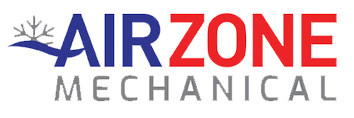Ways to Improve Air Quality in a Home and Breathe Easier This Spring
Spring cleaning takes on new meaning when the focus shifts to improving indoor air quality. Poor ventilation and airborne contaminants can significantly impact respiratory health, making it essential to implement air purification strategies as temperatures rise and pollen counts soar.
Improving health begins with improving indoor air quality to breathe cleaner, fresher air every day. Many households suffer from allergies and fatigue caused by poor air quality, leaving individuals feeling drained and frustrated. This post outlines practical strategies for boosting respiratory wellness and reducing indoor pollutants. Expert tips promise a safe haven that enhances mood and energy. Simple changes can transform a home into a vibrant, healthy retreat.
Maintenance and Air Filter Replacement
 Replacing a home's air filters when they become dirty provides multiple benefits for indoor air quality and overall health. Clean filters trap airborne particles more effectively, preventing dust, pollen, pet dander, and other allergens from circulating throughout the living space. This simple maintenance task can dramatically reduce allergy symptoms and respiratory issues. Filters get dirty faster than one might think.
Replacing a home's air filters when they become dirty provides multiple benefits for indoor air quality and overall health. Clean filters trap airborne particles more effectively, preventing dust, pollen, pet dander, and other allergens from circulating throughout the living space. This simple maintenance task can dramatically reduce allergy symptoms and respiratory issues. Filters get dirty faster than one might think.
Dirty air filters force an HVAC system to work harder, increasing energy consumption by up to 15%, according to the U.S. Department of Energy. When airflow is restricted, the system struggles to maintain comfortable temperatures while consuming more electricity. Additionally, the strain on the system can lead to premature wear and costly repairs. Waiting until problems arise can be avoided.
Beyond energy efficiency, timely filter replacement provides significant health advantages. Many homeowners don't realize that manufacturer recommendations represent minimum replacement intervals rather than optimal ones. For households with allergies, asthma, or other respiratory conditions, changing filters more frequently—sometimes monthly during high-use seasons—can substantially improve symptoms. The difference becomes noticeable within days. Studies from the American Lung Association suggest that enhanced filtration can reduce indoor air pollutants by as much as 30-40%, creating a healthier home environment.
Setting calendar reminders to check filters regularly, especially during seasons when the system runs constantly, is a helpful strategy. This preventative measure benefits both respiratory health and finances.
Regular maintenance of an air conditioning system directly improves indoor air quality while delivering significant efficiency benefits. When HVAC systems receive proper annual service, they filter contaminants more effectively, reducing allergens and pollutants that circulate throughout the home. Professional technicians clean critical components that would otherwise harbor dust, mold, and bacteria. This simple preventative step makes breathing easier.
Scheduling yearly HVAC maintenance can reduce energy consumption by up to 15%, according to the Department of Energy. Clean, well-maintained air conditioners operate with less strain, extending their operational lifespan while lowering monthly utility bills. Furthermore, technicians can identify potential issues before they become costly emergencies. The financial benefits accumulate silently over time.
Properly maintained AC systems provide more consistent temperature control and humidity regulation. During annual service visits, professionals check refrigerant levels, clean or replace air filters, and ensure proper airflow through the system. These adjustments prevent moisture buildup that could otherwise lead to mold growth and bacterial contamination. Breathing cleaner air translates to fewer respiratory issues and better overall health, especially for individuals with asthma or allergies.
Whole Home Air Cleaners, Purifiers, and Filtration Systems
Installing whole-home air cleaners or air filtration systems provides a powerful solution for improving indoor air quality throughout the entire living space. Unlike portable units that clean only one room, these integrated systems work with existing HVAC infrastructure to filter airborne contaminants from every corner of the home. The health advantages are substantial. Better breathing starts with better systems.
Whole-home air purifiers typically use advanced filtration technology to capture particles as small as 0.3 microns, including dust mites, pollen, pet dander, and even some bacteria. Research from the Environmental Protection Agency indicates that indoor air can be 2-5 times more polluted than outdoor air, making comprehensive filtration particularly valuable for respiratory health. These systems run quietly in the background, requiring minimal maintenance beyond regular filter changes.
What makes whole-home purification systems particularly effective for health improvement? The continuous circulation of filtered air significantly reduces airborne allergens that trigger asthma and allergy symptoms. Many households report decreased respiratory infections, reduced allergy symptoms, and better sleep quality after installation. The investment pays dividends in fewer sick days and lower healthcare costs. Additionally, these systems help remove volatile organic compounds (VOCs) from indoor air, protecting residents from chemical irritants that can cause headaches, dizziness, and long-term health issues.
Clean and Maintain Air Ducts
 A home's ductwork serves as the respiratory system for the living space, circulating air throughout every room. Regular duct cleaning and inspection directly improves indoor air quality by removing accumulated contaminants that would otherwise continuously recirculate through the home. Over time, ventilation systems collect dust, pet dander, mold spores, and even bacteria that can trigger respiratory issues and allergic reactions. These hidden pollutants affect everyone but are particularly troublesome for children, elderly family members, and those with asthma or compromised immune systems.
A home's ductwork serves as the respiratory system for the living space, circulating air throughout every room. Regular duct cleaning and inspection directly improves indoor air quality by removing accumulated contaminants that would otherwise continuously recirculate through the home. Over time, ventilation systems collect dust, pet dander, mold spores, and even bacteria that can trigger respiratory issues and allergic reactions. These hidden pollutants affect everyone but are particularly troublesome for children, elderly family members, and those with asthma or compromised immune systems.
Most HVAC professionals recommend duct cleaning every 3-5 years, though homes with pets, smokers, or recent renovations may benefit from more frequent service. According to the National Air Duct Cleaners Association, a single duct cleaning can remove up to 6 pounds of dust from an average home. Furthermore, the EPA notes that clean ducts can improve HVAC efficiency by up to 21%, simultaneously enhancing air quality while reducing energy costs.
Maintaining clean ductwork prevents more serious issues down the line. Moisture accumulation in dirty ducts creates perfect breeding grounds for mold and bacteria. Additionally, clean ducts reduce the workload on the HVAC system, extending its lifespan and performance. Warning signs indicating it's time for cleaning include visible dust blowing from vents, uneven airflow throughout the home, or unexplained allergy symptoms that worsen indoors. Respiratory health benefits from this simple yet effective investment.
About Air Zone Mechanical
Air Zone Mechanical is a family-owned and operated HVAC company serving Miami and beyond for over 25 years. They offer straightforward pricing, same-day service, and bilingual technicians. Call them for indoor air quality treatment services throughout South Florida.



